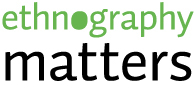Measurements: The Qualitative Work of Quantitative Work

Katie Pine

Max Liboiron
Editor’s Note: Katie Pine and Max Liboiron continue this week’s theme of makers, hackers, and engineers with a post about the politics and performativity of measurements, central to the practice of many engineers and scientists.
Katie Pine (@khpine) is a postdoc in Intel Labs Cultural Transformation Lab, and is currently in residence at UC Irvine. Katie’s work bridges Computer Supported Cooperative Work, Organization Studies, and Science & Technology Studies. At present her NSF-funded research examines micro-foundations of IT-enabled accountability policy and practice in the healthcare domain.
Max Liboiron (@maxliboiron) is a postdoc at Northeastern University’s Social Science Environmental Health Research Institute (SSEHRI) and a co-founding member of the Superstorm Research Lab, a mutual aid research collective. Liboiron studies “techniques of definition,” the tools and practices used by scientists and activists to make emerging, contested, amorphous forms of environmental harm manifest.
From common core to quantified self, measurement is increasingly part and parcel of our daily lives. We use number-driven measurements to make visible, manage, and regulate increasingly nuanced aspects of daily life, work, public institutions, and our environment.
However, measurements are never mere faithful representations of nature, but have social and political origins and ramifications. We are exploring two aspects of measurement that often go unnoticed: first, the situated, complex work that goes into making measurements work in the first place (and the fact that this work is inherently social, cultural, and political), and second, the idea that measurements themselves can be seen as performative, creating and re-creating the very things they are intended to make visible.
Representational theory defines measurement as “the correlation of numbers with entities that are not numbers,” a process of transformation, translation, and even interpretation at the level of sampling and gathering data. What is selected for measurement and what is not, how measurements are standardized, what counts as an important unit of measure, and how measurements are used all have stakes for the systems of which they are part.
Moser & Law (2006) argue that current metaphors for information as “flow” are inaccurate, as these metaphors presume that information is immutable, something that is created and exists in the world and thus can be taken up, passed around, and used for calculation. Moser and Law instead argue that we can see information as something that is inherently mutable and relational, that changes its shape as it is circulated and used. To put it more simply, information never fully has meaning on its own – it becomes meaningful and usable when a particular person or group make decisions about what the information is and how they can use it.

A good example comes from a recent study on counting rates of infection in hospitals (Dixon Woods et Al., 2012). The authors found that an act as seemingly simple as counting infections was actually highly social and cultural – the answer to the question “what counts?” varied widely from one hospital to another, calling into question the current focus in healthcare (and investment of healthcare dollars) on quality measures as a tool for achieving reforms such as infection reduction in practice. Making meaning of numbers requires acts of both calculation and judgment, what Moser & Law call “qualculation.”















Recent Comments